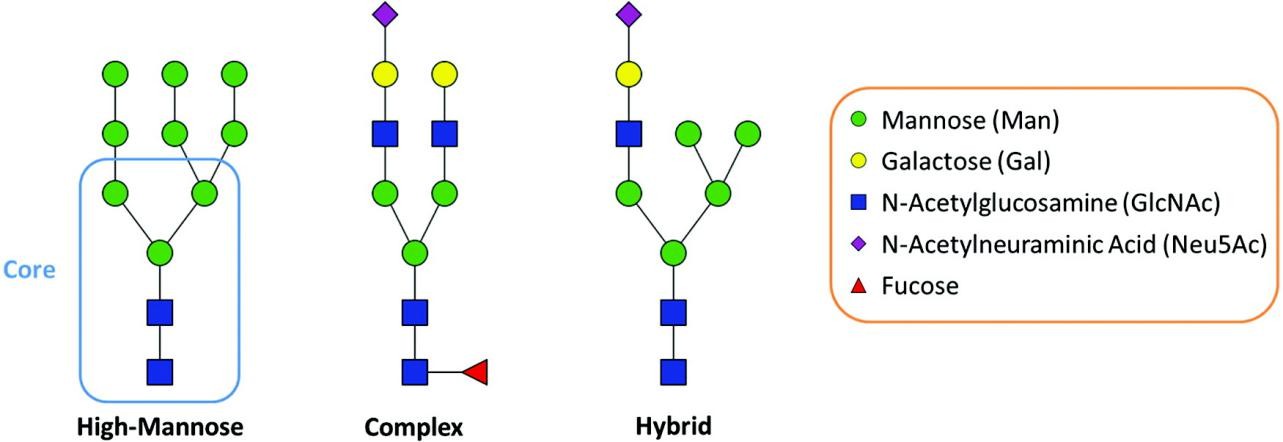N-Glycan Modification and Modification Site Analysis Service
- Home
- Applications
- Proteomics Analysis Services
- Glycoproteomics Analysis Services
- N-Glycan Modification and Modification Site Analysis Service
Service Details
N-glycoprotein is a glycosylated protein ubiquitously present on the surface of cells and in various body fluids,and which are considered to be key drug targets. Therefore, elucidating the functional properties of individual glycan structures and linking sites Linking specific glycosylation to ligand or drug interactions is critical. According to the substitution of mannose residues, N-glycans can be roughly divided into three categories: complex, high mannose-type structures, and hybrid-type structures.
 Fig. 1. The three
general types of N-glycans. (Zlatina K, et al., 2017)
Fig. 1. The three
general types of N-glycans. (Zlatina K, et al., 2017)
At present, the commonly used N-glycan modification and modification site analysis strategy is to separate and enrich the glycoprotein/glycopeptide, then use enzymatic or chemical methods to dispatch the sugar chain from the glycosylated polypeptide and perform mass spectrometry analysis of the released sugar chain or deglycosylated polypeptide to obtain the overall expression and changes of sugar chains and/or glycoproteins in the sample to be tested.
As a ubiquitous post-translational modification, N-glycosylation has an important impact on protein structure and function. The ICH Q6B guideline requires determination of glycosylation amount, site, and glycoform. With advanced mass spectrometry platform and rich experience. Creative Proteomics provides high-quality N-glycan modification and modification site analysis service.
At Creative Proteomics, our N-glycan modification and modification site analysis service includes the following steps.
Creative Proteomics provides N-glycan modification and modification site analysis services, including but not limited to.
*Note: If you have any questions about sample delivery, please feel free to contact us, our experts are always on call.
The ICH Q6B guideline requires comprehensive characterization of glycoprotein glycosylation. With years of experience and an experienced scientific team, Creative Proteomics provides diverse and systematic N-glycan modification and modification site analysis services. Additionally, we can provide fully custom project designs to meet any specific requirements. If you are interested, please contact us or send us an inquiry directly.
References
For research use only, not intended for any clinical use.